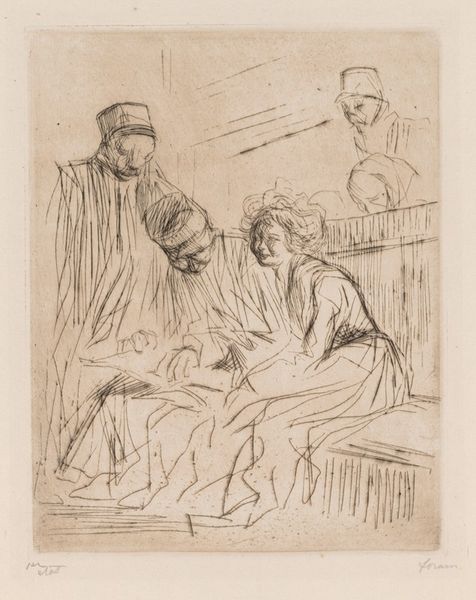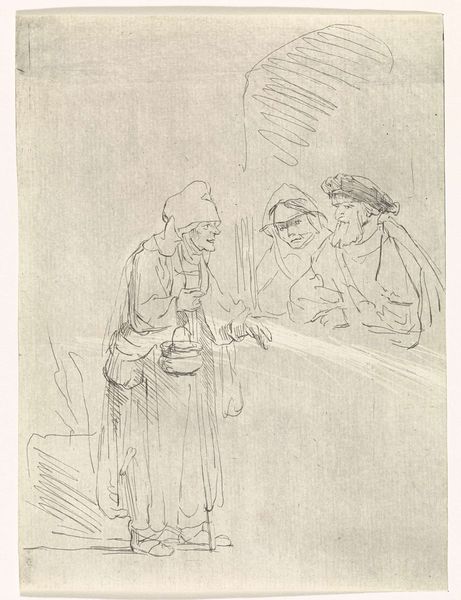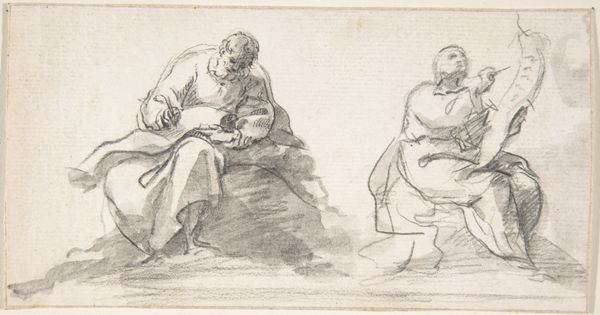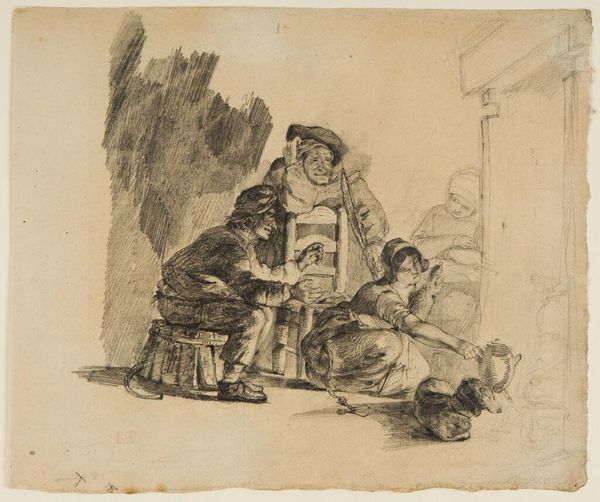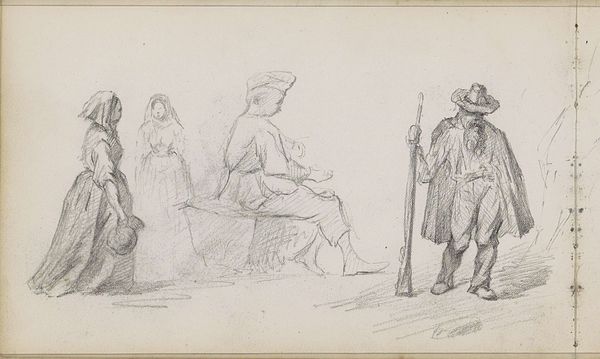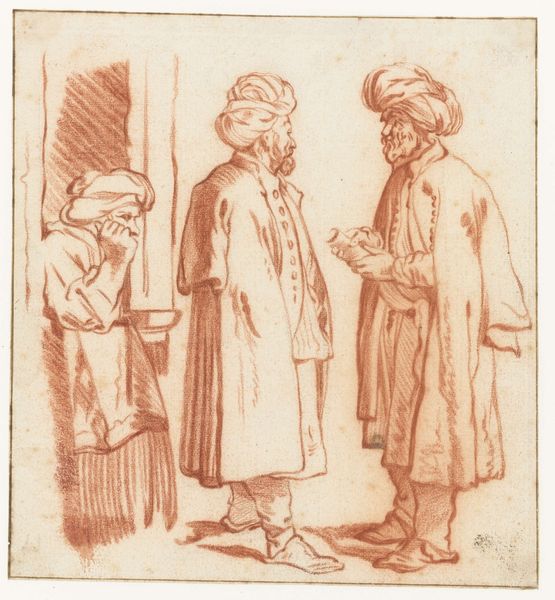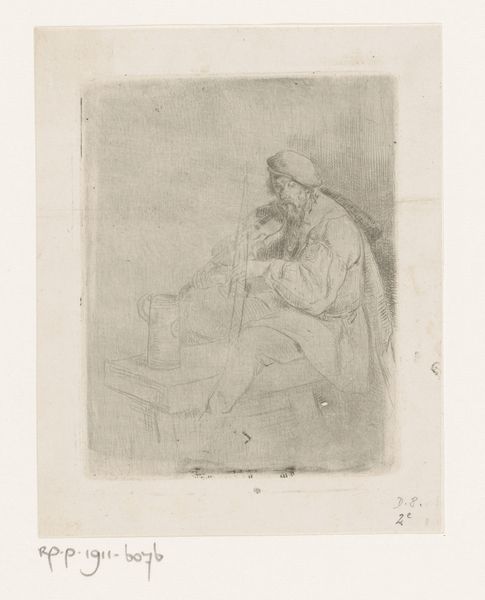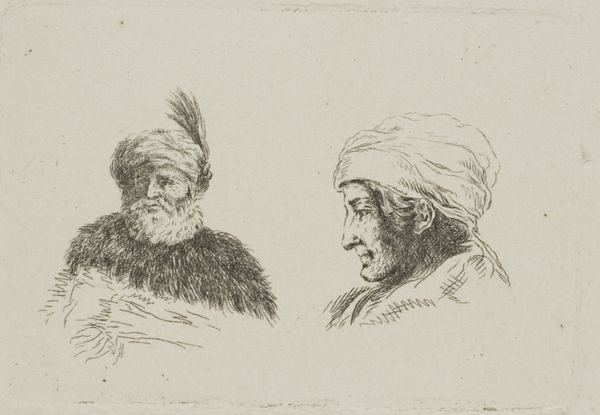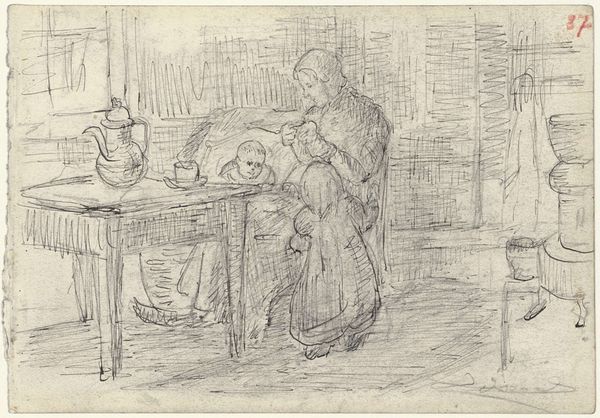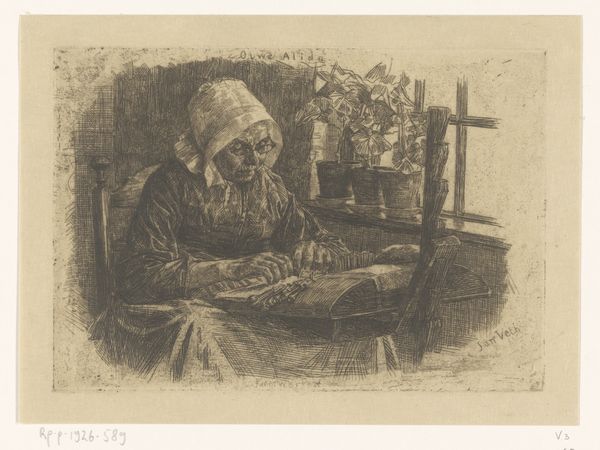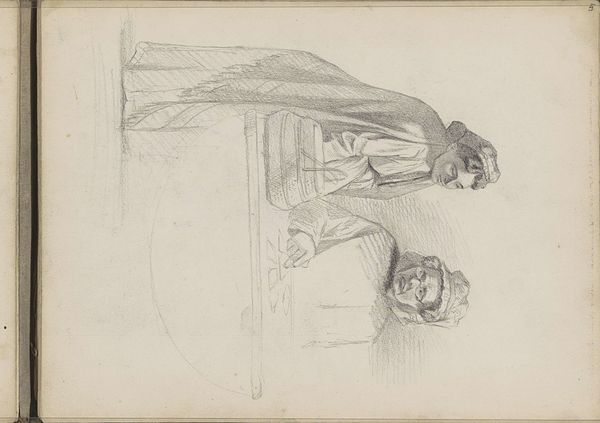
drawing, ink, pen
#
portrait
#
drawing
#
baroque
#
pencil sketch
#
figuration
#
ink
#
pen-ink sketch
#
sketchbook drawing
#
pen
#
genre-painting
Dimensions: height 144 mm, width 175 mm
Copyright: Rijks Museum: Open Domain
Editor: This is "Two Seated Old Men, One with a Globe," a pen and ink drawing by Willem Drost from around 1650 to 1655. The sketching is really loose and gestural. I'm particularly drawn to the details of the faces, especially their contemplative moods. What do you make of this work? Curator: Well, immediately I consider the historical context. Genre paintings like this gained traction as the Dutch Republic became more urbanized and the merchant class grew, shifting patronage. Before, religious or aristocratic depictions were common. Editor: So you're saying everyday people were starting to see themselves represented in art? Curator: Precisely. And think about the globe itself – a powerful symbol of knowledge, exploration, and commerce. Does the act of contemplating the globe suggest the vast world is available to them or instead does the confined indoor space and old age hint at its inaccessibility? What statements are being made, then, about access to information? Also, who controlled these representations and narratives at that time? Editor: It's fascinating how the globe could mean such different things depending on your point of view. So the image isn't just a neutral observation of everyday life, but rather, it can reveal something about societal values and even who has access to global trade and intellectual spheres? Curator: Exactly. We have to look at who is being portrayed, where the work would have been displayed, and what power structures might be subtly reinforced or challenged. Think about its purpose. Was it didactic? Commemorative? Satirical? Editor: I'm definitely seeing more depth in this seemingly simple scene now. It is a small glimpse into how the wealthy class viewed trade. Thank you. Curator: It encourages us to be critical viewers, recognizing how art always exists within broader social and political currents.
Comments
No comments
Be the first to comment and join the conversation on the ultimate creative platform.
